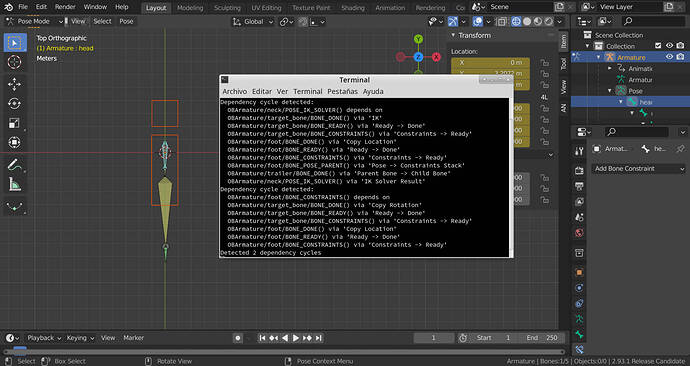This post is actually an edit of my last post but as the edit is so drastic I have deleted the answer and started again, I wanted to leave a better example for anyone who reads this in the future:
Ha, ha, that is the most interesting “none question” I have heard for a long time! 
I presume you want to go down a road stop at a certain point, back up into a cargo bay, unload and go forwards again resuming the original road. …To tell the truth I saw it coming!
The “none answer” is a bit more hacky and has taken me a while to think out!
The main idea is that to change from one curve, using the curve modifier as a path, to another you need to change scenes.
Key-frame the drive control object in the point you want to stop for reversing. ( I stopped at frame 358)
Snap an empty to the tip of the first bone at that point in the animation,
Make a new scene and choose the option “full copy”.
Go to the new scene.
(if you have a lot of scenery you do not need it to be duplicated as “new objects”, so you can delete them in the new scene and instance them from the old one, so as not to have a huge file)
You can edit the curve rotating the handles before the a point before the truck stops.
You will notice that when you rotate the curve handles the truck will change its position a bit at the key-frame where it stopped. This is because the first portion of the curve will change its length slightly.
That is the reason for the empty. To compensate this, so the truck does not jump when you change scenes, you can shorten the start of the curve (by moving the first few handles) until the first bone lines up with the empty again on the keyframe where you stopped the truck.
If you select the curve in the second scene in the example file you will see the selected handles I scaled using the cursor as transform pivot. There is no visible jump of the truck position.
Now you can key frame the reverse motion and copy the key-frame of the stopped position to get back onto the road after unloading.
The idea is that you render the forward motion up to the key-frame when you stopped in the first scene and from then on render the second scene.
Here is the new example file:
TrailerUnload2.blend (175.8 KB)
I have given the curve more handles as the movement is smoother and converted it from bezier to nurbs curve so it does not distort the drive control plane as much. I put both curves in both scenes to show the old and new trajectories.
I also changed the front wheels so they turn like a truck and not on an “axle”. The longer the first verts of the drive control plane and the first bone, the more the wheels turning will anticipate the curve (reminds me of my driving instructor “don’t look at the ground in front of you look the road ahead!”)
To get the wheel turn correct for reverse gear the front “steeing” bone should point backwards and track to the back of the trailer not the front vert group but I did not go that far!
